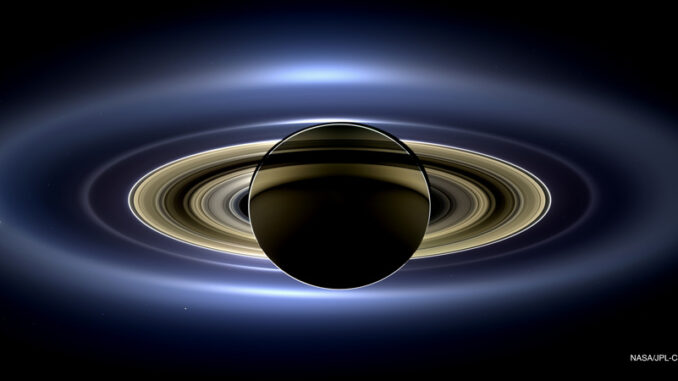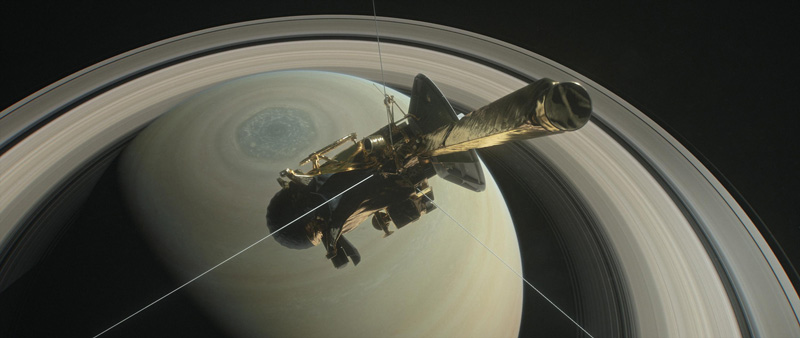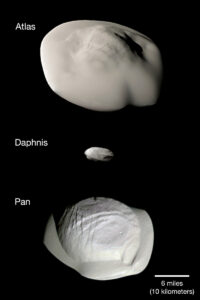
After 20 years in space, and 13 years orbiting Saturn, the Cassini spacecraft’s mission ended dramatically last Friday. Here, btw takes a look at why the spacecraft was important, some of its key discoveries, and why it’s so hard to say goodbye.
A Spacecraft is Born
Cassini was launched on October 15, 1997. Named for Giovanni Domenico Cassini, a 17th– century French-Italian astronomer who discovered four major moons of Saturn, the probe’s mission was to study Saturn and its rings and moons. Seven years after launch, Cassini began to orbit Saturn.
Related Link: Click here to visit the NASA Web site for the Cassini space probe mission.
Great Discoveries
Cassini was originally supposed to remain in Saturn’s orbit for four years, but its mission lasted much longer than that. Over the past 13 years, Cassini has sent roughly 453,000 photographs back to Earth, generating nearly four thousand scientific papers. The probe also revealed the structure of Saturn’s rings, and was responsible for discovering six named moons.

Credit: NASA/JPL-Caltech

Among Cassini’s most exciting discoveries was that Enceladus, one of Saturn’s smaller moons, is covered by an icy exterior but has an ocean of water beneath it. The moon contains both water and carbon compounds, two key ingredients for life. Cassini also revealed that Titan, another of Saturn’s moons, is actually an Earthlike world. It has rivers, lakes, and rain. However, because it is so cold there–about -290 degrees Fahrenheit–the water takes the form of methane rather than liquid. Both of these moons are now key in scientists’ search for life beyond Earth.
Cassini also gave scientists the chance to learn about the changing seasons on Saturn. It takes 29.5 years for Saturn to orbit the Sun, which means that even though Cassini orbited Saturn for thirteen Earth-years, it experienced about half a year on Saturn.
At the very end of its mission, Cassini explored the area between Saturn and its innermost ring, which gave scientists a new close-up view of the rings and provided for some images of Saturn’s interior. The spacecraft even gathered a sample of the molecules that compose Saturn’s atmosphere.
A Bittersweet Goodbye
On Friday, September 15, at about 7:31 a.m., scientists steered Cassini on a crash-course for Saturn, where it quickly disintegrated.
As its mission came to a close, Cassini was still operating as well as it ever had. In fact, it was one of the most successful planetary exploration missions in history. So why did NASA scientists make the decision to blow it up? The reason is that once Cassini ran out of fuel, scientists were worried about it crashing into Enceladus or Titan. Plus, there was concern that Cassini could be carrying microbes that it had picked up during its time in space, and could possibly contaminate another celestial body.
Saying goodbye to a spacecraft that’s been around for so long, and that did such a flawless job completing its mission, wasn’t easy. Hundreds of people gathered for a commemoration celebration at the California Institute of Technology. Interestingly, at the moment of Cassini’s impact, there was a flash, but no fire. This is because Saturn’s atmosphere doesn’t have oxygen. Cassini continued sending signals back to Earth until its final moments. Yet, because Saturn is so far away, those signals didn’t reach Earth until 83 minutes after Cassini had already been destroyed.
The end of the Cassini mission means that it will probably be ten years or more before scientists gain any new information about Saturn or its moons.
